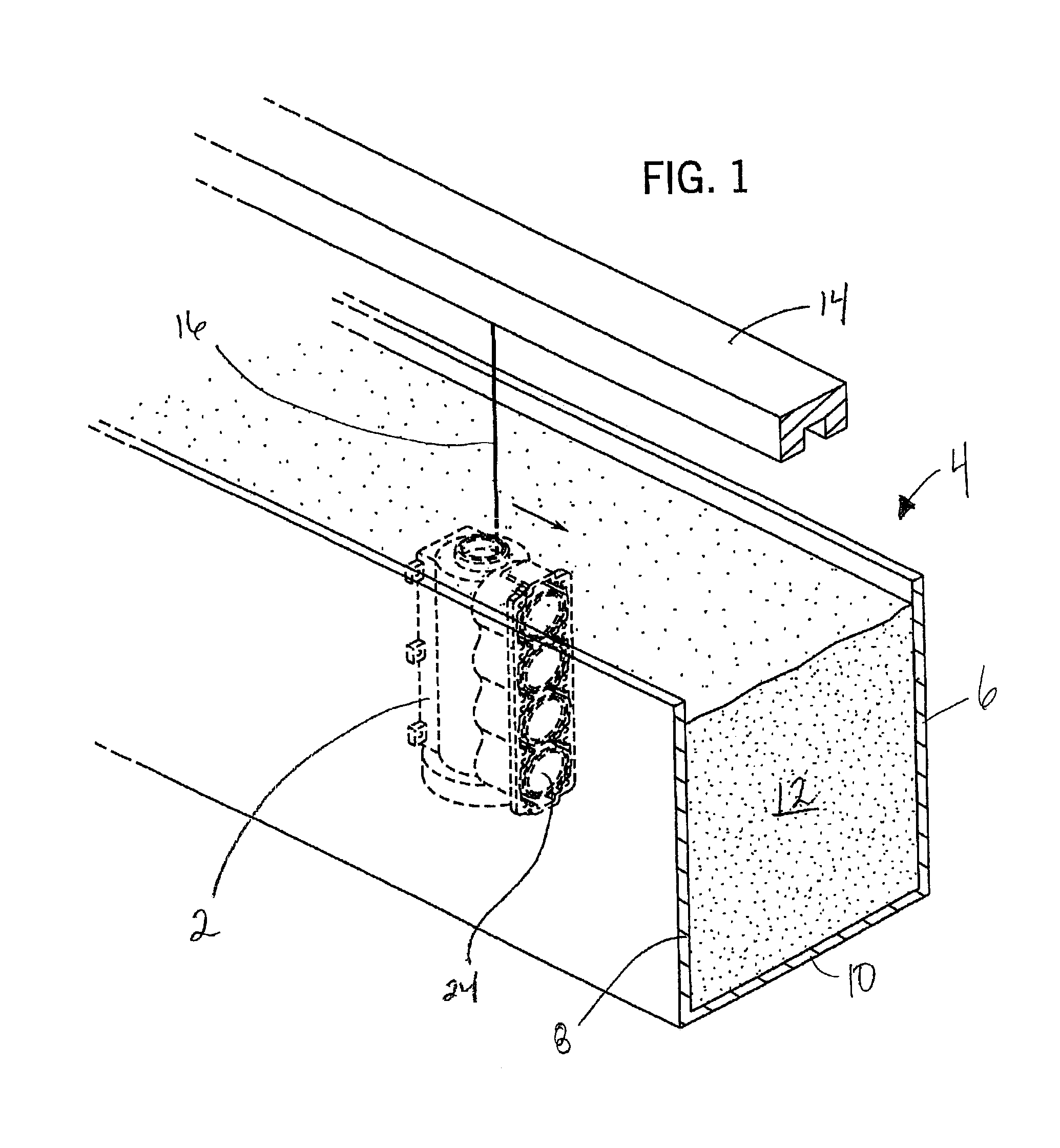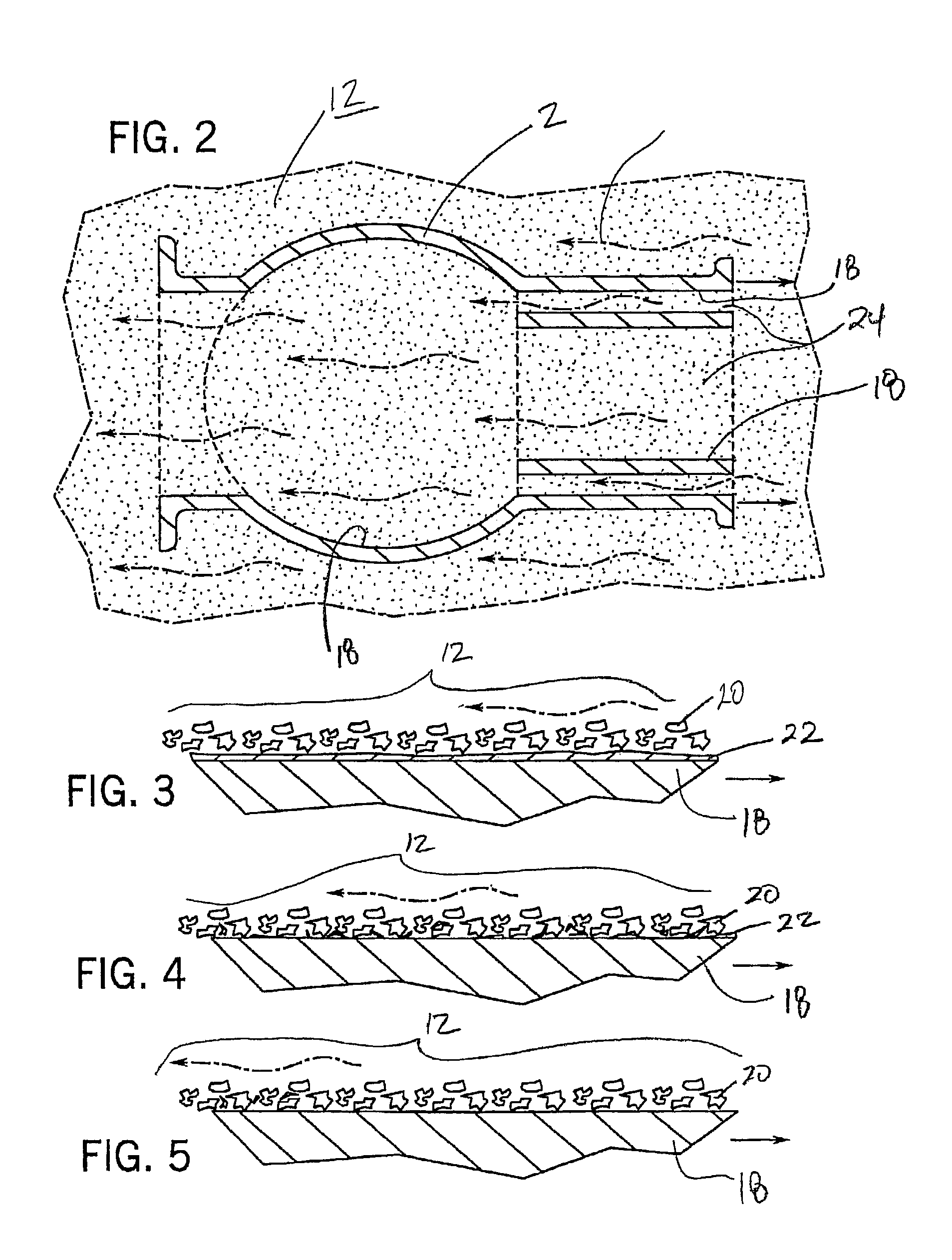Method of cleaning and of heat treating lost foam castings
a technology of lost foam castings and heat treatment methods, which is applied in the direction of heat treatment equipment, furnaces,foundry moulding equipment, etc., can solve the problems of affecting the performance of running engines, and wasting significant amount of time in heating cast articles, so as to achieve significant efficiencies in heat treatment and cleaning of cast articles
- Summary
- Abstract
- Description
- Claims
- Application Information
AI Technical Summary
Benefits of technology
Problems solved by technology
Method used
Image
Examples
Embodiment Construction
[0027]A complex article 2 is formed by a conventional lost foam casting process. The article 2 is metal, such as an aluminum silicon alloy, and is preferably constructed of an alloy from a group consisting of aluminum association alloys 319, 356, 357, 390 or 391. The article 2 is preferably an engine block, as depicted in FIG. 1.
[0028]FIG. 1 further demonstrates the method of cleaning and of heat treating last foam castings of the current invention. A heated fluidized sand bed 4 has a first sidewall 6, a second sidewall 8, and a bottom 10. The heated fluidized sand bed is filled with silica sand 12. Preferably, the silica sand 12 is a synthetic media having a tetrahedral shape and belonging to the crystal class 4-bar 3M. Alternatively, the silica sand 12 may be angular silica sand, synthetic media having a round shape, or other similar material.
[0029]The apparatus utilized in carrying out the method of the current invention further comprises an overhead conveyance mechanism 14 which...
PUM
| Property | Measurement | Unit |
|---|---|---|
| temperature | aaaaa | aaaaa |
| temperature | aaaaa | aaaaa |
| temperature | aaaaa | aaaaa |
Abstract
Description
Claims
Application Information
 Login to View More
Login to View More - R&D
- Intellectual Property
- Life Sciences
- Materials
- Tech Scout
- Unparalleled Data Quality
- Higher Quality Content
- 60% Fewer Hallucinations
Browse by: Latest US Patents, China's latest patents, Technical Efficacy Thesaurus, Application Domain, Technology Topic, Popular Technical Reports.
© 2025 PatSnap. All rights reserved.Legal|Privacy policy|Modern Slavery Act Transparency Statement|Sitemap|About US| Contact US: help@patsnap.com



